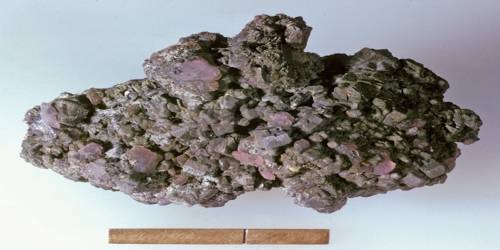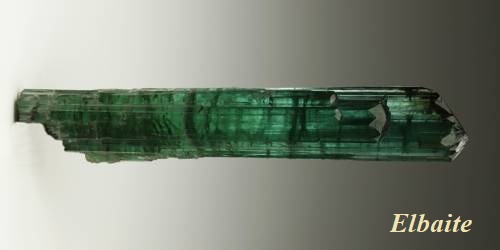What kind of damage might deep sea mining cause to the ocean? The need for an answer is growing as awareness of marine minerals has increased.
There are ancient, potato-sized rocks called “polymetallic nodules” scattered throughout the deep ocean floor. These nodules contain nickel and cobalt minerals, which are highly sought-after for the production of batteries used to power electric vehicles, store renewable energy, and respond to factors like growing urbanization. Numerous mineral-rich nodules can be found in the deep ocean, however it is unclear and hotly debated how mining the ocean floor would affect it.
With a recent study on the sediment cloud that a collector vehicle would churn up when it picks up nodules from the seafloor, MIT ocean scientists have now cast some light on the subject.
The study, appearing in Science Advances, reports the results of a 2021 research cruise to a region of the Pacific Ocean known as the Clarion Clipperton Zone (CCZ), where polymetallic nodules abound.
There, 4,500 meters below the surface of the ocean, scientists outfitted a pre-prototype collecting vehicle with instrumentation to track sediment plume disturbances as it moved across the seafloor. Through a sequence of carefully conceived maneuvers. the MIT scientists used the vehicle to monitor its own sediment cloud and measure its properties.
Their observations revealed that the car left a dense plume of dirt in its wake that spread due to weight alone, a phenomenon known in fluid dynamics as a “turbidity current.” In contrast to what had been predicted, the plume did not immediately rise higher into the water column as it dispersed; instead, it remained rather low, lingering within 2 meters of the seafloor.
“It’s quite a different picture of what these plumes look like, compared to some of the conjecture,” says study co-author Thomas Peacock, professor of mechanical engineering at MIT. “Modeling efforts of deep-sea mining plumes will have to account for these processes that we identified, in order to assess their extent.”
Our study clarifies the reality of what the initial sediment disturbance looks like when you have a certain type of nodule mining operation. The big takeaway is that there are complex processes like turbidity currents that take place when you do this kind of collection. So, any effort to model a deep-sea-mining operation’s impact will have to capture these processes.
Professor Thomas Peacock
The study’s co-authors include lead author Carlos Muñoz-Royo, Raphael Ouillon, and Souha El Mousadik of MIT; and Matthew Alford of the Scripps Institution of Oceanography.
Deep-sea maneuvers
Some mining corporations are considering sending tractor-sized vehicles to the ocean floor in order to collect polymetallic nodules. The nodules and some sediment in their course would be vacuumed up by the vehicles. Then, inside the vehicle, the nodules and silt would be separated. The nodules would be sent up through a riser pipe to a surface vessel, while the majority of the sediment would be dumped right behind the vehicle.
The dynamics of the sediment plume that accompanying surface operating boats may spew back into the ocean have already been examined by Peacock and his team. To assess the sediment cloud produced by the collectors themselves, they concentrated on the other end of the process in their recent study.
In April 2021, the team joined an expedition led by Global Sea Mineral Resources NV (GSR), a Belgian marine engineering contractor that is exploring the CCZ for ways to extract metal-rich nodules.
A European-based science team, Mining Impacts 2, also conducted separate studies in parallel. The cruise was the first in over 40 years to test a “pre-prototype” collector vehicle in the CCZ. The machine, called Patania II, stands about 3 meters high, spans 4 meters wide, and is about one-third the size of what a commercial-scale vehicle is expected to be.
The MIT scientists observed the silt cloud left in the vehicle’s wake as the contractor tested the vehicle’s ability to gather nodules. They did so using two maneuvers that the vehicle was programmed to take: a “selfie,” and a “drive-by.”
The vehicle started off in a straight line with all of its suction systems activated for the start of both moves. For 100 meters, the researchers let the car continue, collecting any nodules that came into contact with the road.
They then instructed the car to turn off its suction systems during the “selfie” action and turn around to drive through the silt cloud it had just produced. During this “selfie” maneuver, the vehicle’s implanted sensors detected the sediment concentration, allowing the scientists to watch the cloud minutes after the vehicle stirred it up.
For the “drive-by” maneuver, the researchers placed a sensor-laden mooring 50 to 100 meters from the vehicle’s planned tracks. After a few of hours, the plume from the vehicle’s collection of nodules began to extend past the mooring. The crew was able to watch the sediment cloud for several hours using this “drive-by” technique, allowing them to observe the evolution of the plume.
Out of steam
Peacock and his crew were able to gauge and monitor the development of the sediment plume that the deep-sea mining vehicle released throughout a number of vehicle operations.
“We saw that the vehicle would be driving in clear water, seeing the nodules on the seabed,” Peacock says. “And then suddenly there’s this very sharp sediment cloud coming through when the vehicle enters the plume.”
From the selfie views, the team observed a behavior that was predicted by some of their previous modeling studies: Even after some mixing with the surrounding water, the vehicle stirred up a substantial amount of silt that was so dense that it formed a plume that behaved almost as a distinct fluid, spreading under its own weight in what is known as a turbidity current.
“The turbidity current spreads under its own weight for some time, tens of minutes, but as it does so, it’s depositing sediment on the seabed and eventually running out of steam,” Peacock says. “After that, the ocean currents get stronger than the natural spreading, and the sediment transitions to being carried by the ocean currents.”
The scientists calculate that 92 to 98 percent of the material had either settled back down or remained within 2 meters of the bottom as a low-lying cloud by the time it had floated past the mooring.
However, there is no assurance that the silt would always remain there rather than moving up the water column. The study team is examining this issue in recent and upcoming investigations with the aim of solidifying knowledge for deep-sea mining sediment plumes.
“Our study clarifies the reality of what the initial sediment disturbance looks like when you have a certain type of nodule mining operation,” Peacock says. “The big takeaway is that there are complex processes like turbidity currents that take place when you do this kind of collection. So, any effort to model a deep-sea-mining operation’s impact will have to capture these processes.”
The National Science Foundation, ARPA-E, the 11th Hour Project, the Benioff Ocean Initiative, and Global Sea Mineral Resources supported this research, in part. The funders had no role in any aspects of the research analysis, the research team states.
















